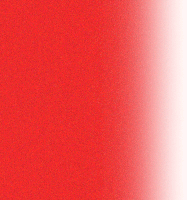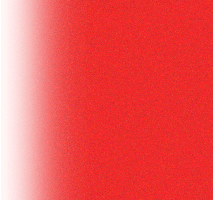|
|
|
 |
||
|
|
 |
|
||
|
|
||||
 |
||||
 |
||||
 |
||||
 |
||||
 |
||||
 |
||||

By Karl Baisch There's no denying that advertising is the predominant medium where creativity is manifested, it's everywhere. Living in New York City, one has the constant feeling of being sold-and it is in ingenuous, and often infectious, ad campaigns that the vanguard in design exist. I hesitate to call this art because in the end, its purpose is to manipulate people into consumption. Art is normally the domain of galleries and museums, so it's exciting when I happen upon a public piece of art that isn't tied to a commodity. Recently, an artist who goes by E.G., and there may be others, has been creeping around my Brooklyn neighborhood in an ever-increasing perimeter between Smith Street, Atlantic Avenue and President Street. E.G. uses sidewalk chalk as the medium for a public art project. By day, the shape beside a parking meter, newspaper box, street sign or lamppost leaves the impression of a shadow. But when the sun goes down, you can see that the chalk lines form the perimeter of the shadow on the sidewalk. It's subtle, yet impossible to miss. Like most unsanctioned public expressions, aside from simple tags, it is the clandestine, and temporary aspects of this project that I find intriguing. All of these outlines are signed in a style that is indicative of a graffiti writer. The work is executed at night, presumably because this person is worried about getting caught. So I've been wondering how the police would handle this individual if they rolled up while chalk outlines were being sketched on sidewalks. No one's going to arrest a little girl for designing a hopscotch course in front of her stoop, a typical use for sidewalk chalk, but is this something different? Maybe E.G. knows that there is no penalty for sidewalk chalking, which is easily washed away, and goes out at night because the shadows are the impetus behind this piece. It would be hard to see the city bringing a case based on property damage, which is the major complaint lodged against graffiti writers. Legality aside, there is something more vital about this type of creative expression. In a city where the most frequent experience of creativity is tainted by profit motives, public manifestations of artistic expression offer a needed reprieve. They ask us to step back for a moment before turning our minds to more "important" matters. I've watched people stop, look down, look back at a fire hydrant, nod, smile, and continue on their way. And this might not be a big thing, but a few moments of mirth may help to lighten the load of more serious concerns. This type of expression also asks us to take a second look at our environment, to see it from a different perspective. It is this aspect of the arts that hint at a lesson to be learned from projects like the one undertaken by E.G. In 1934, John Dewey argued that art is an essential part of a democratic society. He based this idea on the notions that the communicative nature of art allows us to experience the internal lives of our communities, and it is a medium where we can initiate conversations about cultural differences. In order to be active citizens, people need to be exposed to the types of transformative experience that the arts can provide. When art is removed from our daily lives, when our entertainments become banal, we lose an essential tool with which to foster understanding. In a culture where definitions of art are sequestered within institutional structures-the new Chanel show at the Metropolitan Museum of Art for instance-and our understanding of creativity resides in commercial products, the potential benefits of aesthetic experiences are dissipated. This is not to say that public collections are unimportant, they do offer a significant point of access to our cultural heritage. But periodic access to venues that house objects, which have been designated as art by others, is not enough. Public displays of art have a long history, but they tend to be associated with political turmoil. Creative expression has always played a central role in protest movements. It is an effective tool for giving voice to discontent. But it is also celebratory. Through a proliferation of art projects that are designed to foster communication and transformative experiences we can build stronger communities. And this should not have to happen under the cover of darkness. |
|
|
|
||||||||||||
|
|
|||||||||||||
|
|
|
|
|||||||||||
|
|
|||||||||||||
|
|
|||||||||||||
|
|
|||||||||||||
|
|
|
|
|||||||||||
|
|
|||||||||||||
|
|
|||||||||||||
|
|
|||||||||||||
|
|
|
|
|||||||||||
|
|
|||||||||||||
|
|
|||||||||||||
|
|
|||||||||||||
|
|
|
|
|||||||||||
|
|
|||||||||||||
|
|
|||||||||||||
|
|
|||||||||||||
|
|
|
|
|||||||||||
|
|
|||||||||||||
|
|
|||||||||||||
|
|
|||||||||||||
|
|
|
|
|||||||||||
|
|
|||||||||||||
|
|
|||||||||||||
 |
|||||||||||||
 |
|||||||||||||
 |
|||||||||||||
 |
|||||||||||||
 |
|||||||||||||
 |
|||||||||||||
|
|
|
|
|
|
|
|
|
|
|
|
|
|
|